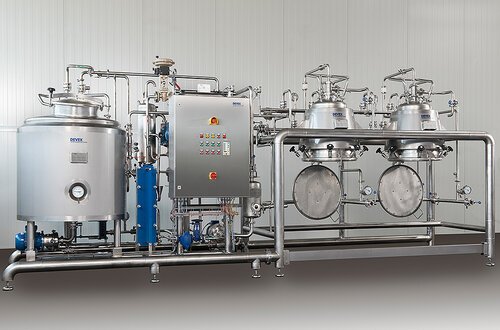Spice Extraction
Spices have always been important in cooking, bringing unique flavours and smells to dishes worldwide. The process of getting these flavours out of spices is called spice extraction, and it's like unlocking the special qualities in each spice. This detailed look will help us understand how spice extraction works and why spices are so crucial in our kitchens.
The Origins of Spice Extraction
A long time ago, in ancient civilizations, people cherished spices not just for making food taste good but also for their health benefits and ability to preserve food. In the beginning, they used basic methods like crushing, grinding, or soaking spices in liquids to bring out their flavours and smells. As trade grew and people wanted spices from faraway places, they started using more advanced ways to extract these precious flavours.
Traditional Methods
Grinding and Crushing
People in the past used a mortar and pestle, a kind of bowl and stick, to grind and release essential oils and flavours from spices like black pepper and cardamom. This method is still used today.
Steam Distillation
A very old method called steam distillation has been used since ancient times. In this method, steam is passed through crushed spices. The steam carries away certain compounds from the spices, and when cooled down, these compounds turn into liquid. This is a common way of getting essential oils from spices like cloves and cinnamon.
Solvent Extraction
Solvent extraction is a method that uses a liquid like alcohol or hexane to dissolve essential oils from spices. After the essential oils are dissolved, the solvent is evaporated, leaving behind a concentrated Spice Extraction. This method works well for getting oils from seeds and nuts.
Modern Techniques
Super Critical Fluid Extraction (SCFE)
SCFE, or supercritical fluid extraction, is a process that uses supercritical carbon dioxide as a solvent to extract essential oils from spices. This method is very efficient and doesn't leave behind any leftover solvents. It helps preserve the delicate flavours of spices, making it a common choice for extracting oils from delicate spices like saffron.
Cold Pressing
Cold pressing is a method of extracting oils from spices using mechanical means without applying heat. This process is chosen to preserve the natural flavours and nutritional value of the spices. It works well for extracting oils from citrus peels and specific seeds.
Enfleurage
Enfleurage is a method for getting essential oils from delicate flowers and blossoms. In this process, the flowers are placed on a layer of fat, which absorbs the essential oils over time. The fat is later dissolved in alcohol to get the concentrated extract.
The Chemistry of Spice Extraction
Knowing what chemicals are in spices is important for creating good extraction methods. Spices have different compounds that give them flavour, smell, and colour. There are classes of compounds like terpenoids, phenolics, and alkaloids in various spices, and each type plays a special role in how we experience the taste and smell of spices.
Essential Oils
Essential oils are strong-smelling compounds in spices that give them their special flavours and smell. Getting these oils out is a main goal in spice extraction.
Capsaicinoids
Capsaicinoids are what makes chili peppers spicy. Knowing how to extract them is important for making Spice Extraction with different levels of heat to suit different tastes.
Curcuminoids
Turmeric, a well-known spice, has curcuminoids that give it a bright yellow colour and offer various health benefits. Extracting curcuminoids involves methods that retain both the colour and medicinal properties of turmeric.
Applications of Spice Extracts
Food Industry
Spice Extraction is widely used in the food industry to enhance the flavour of different products. Whether it's savoury dishes or baked goods, Spice Extraction is essential for creating consistent and high-quality culinary experiences.
Pharmaceuticals
Some spices have medicinal properties, and they are used in making herbal medicines and supplements in the pharmaceutical industry. Spice Extraction is incorporated into these formulations to harness their natural healing properties.
Perfumery and Cosmetics
Spice Extraction is essential in the fragrance industry to produce distinct and exotic scents. Moreover, some spices have properties that fight against microbes and act as antioxidants, making them valuable in the creation of cosmetic products.
Challenges and Innovations
Quality Control
Ensuring Spice Extraction have consistent quality can be challenging due to differences in raw materials. Advances in analysis techniques, like chromatography and spectrometry, help maintain the standardization of Spice Extraction.
Sustainability
As people become more aware of environmental sustainability, there's a greater focus on using sustainable sourcing and extraction methods in the spice industry. This involves exploring eco-friendly practices to reduce the ecological impact of spice extraction.
Advancements in Technology
Technological advancements, including automation and precision engineering, are improving the efficiency of spice extraction processes. These innovations contribute to higher yields, reduced energy consumption, and overall process optimization.
Spice Extraction at Home
New technologies, like automation and precision engineering, are making spice extraction processes more efficient. These advancements help increase the amount of spice extract produced, lower energy usage and improve the overall process.
Conclusion
Spice Extraction flavours are like a mix of old and new. Devex Technology in collaboration with Kiron Food Processing Technologies uses the latest technology to bring out the rich tastes in nature's spices. From methods that have been around for ages to new technologies shaping the future, the way we extract flavours from spices is a fascinating blend of art and science. As we keep discovering and enjoying the many spices out there, how we get their flavours is a captivating part of cooking and culture.








